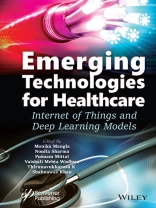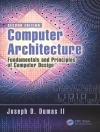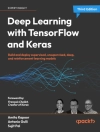“Emerging Technologies for Healthcare” begins with an Io T-based solution for the automated healthcare sector which is enhanced to provide solutions with advanced deep learning techniques.
The book provides feasible solutions through various machine learning approaches and applies them to disease analysis and prediction. An example of this is employing a three-dimensional matrix approach for treating chronic kidney disease, the diagnosis and prognostication of acquired demyelinating syndrome (ADS) and autism spectrum disorder, and the detection of pneumonia. In addition, it provides healthcare solutions for post COVID-19 outbreaks through various suitable approaches, Moreover, a detailed detection mechanism is discussed which is used to devise solutions for predicting personality through handwriting recognition; and novel approaches for sentiment analysis are also discussed with sufficient data and its dimensions.
This book not only covers theoretical approaches and algorithms, but also contains the sequence of steps used to analyze problems with data, processes, reports, and optimization techniques. It will serve as a single source for solving various problems via machine learning algorithms.
Table des matières
Preface xvii
Part I: Basics of Smart Healthcare 1
1 An Overview of Io T in Health Sectors 3
Sheeba P. S.
1.1 Introduction 3
1.2 Influence of Io T in Healthcare Systems 6
1.2.1 Health Monitoring 6
1.2.2 Smart Hospitals 7
1.2.3 Tracking Patients 7
1.2.4 Transparent Insurance Claims 8
1.2.5 Healthier Cities 8
1.2.6 Research in Health Sector 8
1.3 Popular Io T Healthcare Devices 9
1.3.1 Hearables 9
1.3.2 Moodables 9
1.3.3 Ingestible Sensors 9
1.3.4 Computer Vision 10
1.3.5 Charting in Healthcare 10
1.4 Benefits of Io T 10
1.4.1 Reduction in Cost 10
1.4.2 Quick Diagnosis and Improved Treatment 10
1.4.3 Management of Equipment and Medicines 11
1.4.4 Error Reduction 11
1.4.5 Data Assortment and Analysis 11
1.4.6 Tracking and Alerts 11
1.4.7 Remote Medical Assistance 11
1.5 Challenges of Io T 12
1.5.1 Privacy and Data Security 12
1.5.2 Multiple Devices and Protocols Integration 12
1.5.3 Huge Data and Accuracy 12
1.5.4 Underdeveloped 12
1.5.5 Updating the Software Regularly 12
1.5.6 Global Healthcare Regulations 13
1.5.7 Cost 13
1.6 Disadvantages of Io T 13
1.6.1 Privacy 13
1.6.2 Access by Unauthorized Persons 13
1.7 Applications of Io T 13
1.7.1 Monitoring of Patients Remotely 13
1.7.2 Management of Hospital Operations 14
1.7.3 Monitoring of Glucose 14
1.7.4 Sensor Connected Inhaler 15
1.7.5 Interoperability 15
1.7.6 Connected Contact Lens 15
1.7.7 Hearing Aid 16
1.7.8 Coagulation of Blood 16
1.7.9 Depression Detection 16
1.7.10 Detection of Cancer 17
1.7.11 Monitoring Parkinson Patient 17
1.7.12 Ingestible Sensors 18
1.7.13 Surgery by Robotic Devices 18
1.7.14 Hand Sanitizing 18
1.7.15 Efficient Drug Management 19
1.7.16 Smart Sole 19
1.7.17 Body Scanning 19
1.7.18 Medical Waste Management 20
1.7.19 Monitoring the Heart Rate 20
1.7.20 Robot Nurse 20
1.8 Global Smart Healthcare Market 21
1.9 Recent Trends and Discussions 22
1.10 Conclusion 23
References 23
2 Io T-Based Solutions for Smart Healthcare 25
Pankaj Jain, Sonia F Panesar, Bableen Flora Talwar and Mahesh Kumar Sah
2.1 Introduction 26
2.1.1 Process Flow of Smart Healthcare System 26
2.1.1.1 Data Source 26
2.1.1.2 Data Acquisition 27
2.1.1.3 Data Pre-Processing 27
2.1.1.4 Data Segmentation 28
2.1.1.5 Feature Extraction 28
2.1.1.6 Data Analytics 28
2.2 Io T Smart Healthcare System 29
2.2.1 System Architecture 30
2.2.1.1 Stage 1: Perception Layer 30
2.2.1.2 Stage 2: Network Layer 32
2.2.1.3 Stage 3: Data Processing Layer 32
2.2.1.4 Stage 4: Application Layer 33
2.3 Locally and Cloud-Based Io T Architecture 33
2.3.1 System Architecture 33
2.3.1.1 Body Area Network (BAN) 34
2.3.1.2 Smart Server 34
2.3.1.3 Care Unit 35
2.4 Cloud Computing 35
2.4.1 Infrastructure as a Service (Iaa S) 37
2.4.2 Platform as a Service (Paa S) 37
2.4.3 Software as a Service (Saa S) 37
2.4.4 Types of Cloud Computing 37
2.4.4.1 Public Cloud 37
2.4.4.2 Private Cloud 38
2.4.4.3 Hybrid Cloud 38
2.4.4.4 Community Cloud 38
2.5 Outbreak of Arduino Board 38
2.6 Applications of Smart Healthcare System 39
2.6.1 Disease Diagnosis and Treatment 41
2.6.2 Health Risk Monitoring 42
2.6.3 Voice Assistants 42
2.6.4 Smart Hospital 42
2.6.5 Assist in Research and Development 43
2.7 Smart Wearables and Apps 43
2.8 Deep Learning in Biomedical 44
2.8.1 Deep Learning 46
2.8.2 Deep Neural Network Architecture 47
2.8.3 Deep Learning in Bioinformatic 49
2.8.4 Deep Learning in Bioimaging 49
2.8.5 Deep Learning in Medical Imaging 50
2.8.6 Deep Learning in Human-Machine Interface 53
2.8.7 Deep Learning in Health Service Management 53
2.9 Conclusion 55
References 55
3 QLattice Environment and Feyn QGraph Models—A New Perspective Toward Deep Learning 69
Vinayak Bharadi
3.1 Introduction 70
3.1.1 Machine Learning Models 70
3.2 Machine Learning Model Lifecycle 71
3.2.1 Steps in Machine Learning Lifecycle 71
3.2.1.1 Data Preparation 72
3.2.1.2 Building the Machine Learning Model 72
3.2.1.3 Model Training 72
3.2.1.4 Parameter Selection 72
3.2.1.5 Transfer Learning 73
3.2.1.6 Model Verification 73
3.2.1.7 Model Deployment 74
3.2.1.8 Monitoring 74
3.3 A Model Deployment in Keras 75
3.3.1 Pima Indian Diabetes Dataset 75
3.3.2 Multi-Layered Perceptron Implementation in Keras 76
3.3.3 Multi-Layered Perceptron Implementation With Dropout and Added Noise 77
3.4 QLattice Environment 80
3.4.1 Feyn Models 80
3.4.1.1 Semantic Types 82
3.4.1.2 Interactions 83
3.4.1.3 Generating QLattice 83
3.4.2 QLattice Workflow 83
3.4.2.1 Preparing the Data 84
3.4.2.2 Connecting to QLattice 84
3.4.2.3 Generating QGraphs 84
3.4.2.4 Fitting, Sorting, and Updating QGraphs 85
3.4.2.5 Model Evaluation 86
3.5 Using QLattice Environment and QGraph Models for COVID-19 Impact Prediction 87
References 91
4 Sensitive Healthcare Data: Privacy and Security Issues and Proposed Solutions 93
Abhishek Vyas, Satheesh Abimannan and Ren-Hung Hwang
4.1 Introduction 94
4.1.1 Types of Technologies Used in Healthcare Industry 94
4.1.2 Technical Differences Between Security and Privacy 95
4.1.3 HIPAA Compliance 95
4.2 Medical Sensor Networks/Medical Internet of Things/Body Area Networks/WBANs 97
4.2.1 Security and Privacy Issues in WBANs/WMSNs/WMIOTs 101
4.3 Cloud Storage and Computing on Sensitive Healthcare Data 112
4.3.1 Security and Privacy in Cloud Computing and Storage for Sensitive Healthcare Data 114
4.4 Blockchain for Security and Privacy Enhancement in Sensitive Healthcare Data 119
4.5 Artificial Intelligence, Machine Learning, and Big Data in Healthcare and Its Efficacy in Security and Privacy of Sensitive Healthcare Data 122
4.5.1 Differential Privacy for Preserving Privacy of Big Medical Healthcare Data and for Its Analytics 124
4.6 Conclusion 124
References 125
Part II: Employment of Machine Learning in Disease Detection 129
5 Diabetes Prediction Model Based on Machine Learning 131
Ayush Kumar Gupta, Sourabh Yadav, Priyanka Bhartiya and Divesh Gupta
5.1 Introduction 131
5.2 Literature Review 133
5.3 Proposed Methodology 135
5.3.1 Data Accommodation 135
5.3.1.1 Data Collection 135
5.3.1.2 Data Preparation 136
5.3.2 Model Training 138
5.3.2.1 K Nearest Neighbor Classification Technique 139
5.3.2.2 Support Vector Machine 140
5.3.2.3 Random Forest Algorithm 142
5.3.2.4 Logistic Regression 144
5.3.3 Model Evaluation 145
5.3.4 User Interaction 145
5.3.4.1 User Inputs 146
5.3.4.2 Validation Using Classifier Model 146
5.3.4.3 Truth Probability 146
5.4 System Implementation 147
5.5 Conclusion 153
References 153
6 Lung Cancer Detection Using 3D CNN Based on Deep Learning 157
Siddhant Panda, Vasudha Chhetri, Vikas Kumar Jaiswal and Sourabh Yadav
6.1 Introduction 157
6.2 Literature Review 159
6.3 Proposed Methodology 161
6.3.1 Data Handling 161
6.3.1.1 Data Gathering 161
6.3.1.2 Data Pre-Processing 162
6.3.2 Data Visualization and Data Split 162
6.3.2.1 Data Visualization 162
6.3.2.2 Data Split 162
6.3.3 Model Training 163
6.3.3.1 Training Neural Network 163
6.3.3.2 Model Optimization 166
6.4 Results and Discussion 168
6.4.1 Gathering and Pre-Processing of Data 169
6.4.1.1 Gathering and Handling Data 169
6.4.1.2 Pre-Processing of Data 170
6.4.2 Data Visualization 171
6.4.2.1 Resampling 173
6.4.2.2 3D Plotting Scan 173
6.4.2.3 Lung Segmentation 173
6.4.3 Training and Testing of Data in 3D Architecture 175
6.5 Conclusion 178
References 178
7 Pneumonia Detection Using CNN and ANN Based on Deep Learning Approach 181
Priyanka Bhartiya, Sourabh Yadav, Ayush Gupta and Divesh Gupta
7.1 Introduction 182
7.2 Literature Review 183
7.3 Proposed Methodology 185
7.3.1 Data Gathering 185
7.3.1.1 Data Collection 185
7.3.1.2 Data Pre-Processing 186
7.3.1.3 Data Split 186
7.3.2 Model Training 187
7.3.2.1 Training of Convolutional Neural Network 189
7.3.2.2 Training of Artificial Neural Network 191
7.3.3 Model Fitting 193
7.3.3.1 Fit Generator 193
7.3.3.2 Validation of Accuracy and Loss Plot 193
7.3.3.3 Testing and Prediction 193
7.4 System Implementation 194
7.4.1 Data Gathering, Pre-Processing, and Split 194
7.4.1.1 Data Gathering 194
7.4.1.2 Data Pre-Processing 195
7.4.1.3 Data Split 196
7.4.2 Model Building 196
7.4.3 Model Fitting 197
7.4.3.1 Fit Generator 197
7.4.3.2 Validation of Accuracy and Loss Plot 197
7.4.3.3 Testing and Prediction 198
7.5 Conclusion 199
References 199
8 Personality Prediction and Handwriting Recognition Using Machine Learning 203
Vishal Patil and Harsh Mathur
8.1 Introduction to the System 204
8.1.1 Assumptions and Limitations 206
8.1.1.1 Assumptions 206
8.1.1.2 Limitations 206
8.1.2 Practical Needs 206
8.1.3 Non-Functional Needs 206
8.1.4 Specifications for Hardware 207
8.1.5 Specifications for Applications 207
8.1.6 Targets 207
8.1.7 Outcomes 207
8.2 Literature Survey 208
8.2.1 Computerized Human Behavior Identification Through Handwriting Samples 208
8.2.2 Behavior Prediction Through Handwriting Analysis 209
8.2.3 Handwriting Sample Analysis for a Finding of Personality Using Machine Learning Algorithms 209
8.2.4 Personality Detection Using Handwriting Analysis 210
8.2.5 Automatic Predict Personality Based on Structure of Handwriting 210
8.2.6 Personality Identification Through Handwriting Analysis: A Review 210
8.2.7 Text Independent Writer Identification Using Convolutional Neural Network 210
8.2.8 Writer Identification Using Machine Learning Approaches 211
8.2.9 Writer Identification from Handwritten Text Lines 211
8.3 Theory 212
8.3.1 Pre-Processing 212
8.3.2 Personality Analysis 215
8.3.3 Personality Characteristics 216
8.3.4 Writer Identification 217
8.3.5 Features Used 219
8.4 Algorithm To Be Used 220
8.5 Proposed Methodology 224
8.5.1 System Flow 225
8.6 Algorithms vs. Accuracy 226
8.6.1 Implementation 228
8.7 Experimental Results 231
8.8 Conclusion 232
8.9 Conclusion and Future Scope 232
Acknowledgment 232
References 233
9 Risk Mitigation in Children With Autism Spectrum Disorder Using Brain Source Localization 237
Joy Karan Singh, Deepti Kakkar and Tanu Wadhera
9.1 Introduction 238
9.2 Risk Factors Related to Autism 239
9.2.1 Assistive Technologies for Autism 240
9.2.2 Functional Connectivity as a Biomarker for Autism 241
9.2.3 Early Intervention and Diagnosis 242
9.3 Materials and Methodology 243
9.3.1 Subjects 243
9.3.2 Methods 243
9.3.3 Data Acquisition and Processing 243
9.3.4 s LORETA as a Diagnostic Tool 244
9.4 Results and Discussion 245
9.5 Conclusion and Future Scope 247
References 247
10 Predicting Chronic Kidney Disease Using Machine Learning 251
Monika Gupta and Parul Gupta
10.1 Introduction 252
10.2 Machine Learning Techniques for Prediction of Kidney Failure 253
10.2.1 Analysis and Empirical Learning 254
10.2.2 Supervised Learning 255
10.2.3 Unsupervised Learning 256
10.2.3.1 Understanding and Visualization 257
10.2.3.2 Odd Detection 257
10.2.3.3 Object Completion 258
10.2.3.4 Information Acquisition 258
10.2.3.5 Data Compression 258
10.2.3.6 Capital Market 258
10.2.4 Classification 259
10.2.4.1 Training Process 260
10.2.4.2 Testing Process 260
10.2.5 Decision Tree 261
10.2.6 Regression Analysis 263
10.2.6.1 Logistic Regression 263
10.2.6.2 Ordinal Logistic Regression 265
10.2.6.3 Estimating Parameters 266
10.2.6.4 Multivariate Regression 268
10.3 Data Sources 269
10.4 Data Analysis 272
10.5 Conclusion 274
10.6 Future Scope 274
References 274
Part III: Advanced Applications of Machine Learning in Healthcare 279
11 Behavioral Modeling Using Deep Neural Network Framework for ASD Diagnosis and Prognosis 281
Tanu Wadhera, Deepti Kakkar and Rajneesh Rani
11.1 Introduction 282
11.2 Automated Diagnosis of ASD 284
11.2.1 Deep Learning 289
11.2.2 Deep Learning in ASD 290
11.2.3 Transfer Learning Approach 290
11.3 Purpose of the Chapter 292
11.4 Proposed Diagnosis System 293
11.5 Conclusion 294
References 295
12 Random Forest Application of Twitter Data Sentiment Analysis in Online Social Network Prediction 299
Arnav Munshi, M. Arvindhan and Thirunavukkarasu K.
12.1 Introduction 300
12.1.1 Motivation 300
12.1.2 Domain Introduction 300
12.2 Literature Survey 302
12.3 Proposed Methodology 304
12.4 Implementation 311
12.5 Conclusion 311
References 311
13 Remedy to COVID-19: Social Distancing Analyzer 315
Sourabh Yadav
13.1 Introduction 315
13.2 Literature Review 318
13.3 Proposed Methodology 321
13.3.1 Person Detection 321
13.3.1.1 Frame Creation 324
13.3.1.2 Contour Detection 325
13.3.1.3 Matching with COCO Model 326
13.3.2 Distance Calculation 326
13.3.2.1 Calculation of Centroid 326
13.3.2.2 Distance Among Adjacent Centroids 327
13.4 System Implementation 328
13.5 Conclusion 333
References 334
14 Io T-Enabled Vehicle Assistance System of Highway Resourcing for Smart Healthcare and Sustainability 337
Shubham Joshi and Radha Krishna Rambola
14.1 Introduction 338
14.2 Related Work 340
14.2.1 Adoption of Io T in Vehicle to Ensure Driver Safety 341
14.2.2 Io T in Healthcare System 341
14.2.3 The Technology Used in Assistance Systems 343
14.2.3.1 Adaptive Cruise Control (ACC) 343
14.2.3.2 Lane Departure Warning 343
14.2.3.3 Parking Assistance 343
14.2.3.4 Collision Avoidance System 343
14.2.3.5 Driver Drowsiness Detection 344
14.2.3.6 Automotive Night Vision 344
14.3 Objectives, Context, and Ethical Approval 344
14.4 Technical Background 345
14.4.1 Io T With Health 345
14.4.2 Machine-to-Machine (M2M) Communication 345
14.4.3 Device-to-Device (D2D) Communication 345
14.4.4 Wireless Sensor Network 346
14.4.5 Crowdsensing 346
14.5 Io T Infrastructural Components for Vehicle Assistance System 346
14.5.1 Communication Technology 346
14.5.2 Sensor Network 347
14.5.3 Infrastructural Component 348
14.5.4 Human Health Detection by Sensors 348
14.6 Io T-Enabled Vehicle Assistance System of Highway Resourcing for Smart Healthcare and Sustainability 349
14.7 Challenges in Implementation 353
14.8 Conclusion 353
References 354
15 Aids of Machine Learning for Additively Manufactured Bone Scaffold 359
Nimisha Rahul Shirbhate and Sanjay Bokade
15.1 Introduction 360
15.1.1 Bone Scaffold 360
15.1.2 Bone Grafting 362
15.1.3 Comparison Bone Grafting and Bone Scaffold 363
15.2 Research Background 364
15.3 Statement of Problem 364
15.4 Research Gap 365
15.5 Significance of Research 366
15.6 Outline of Research Methodology 366
15.6.1 Customized Design of Bone Scaffold 366
15.6.2 Manufacturing Methods and Biocompatible Material 367
15.6.2.1 Conventional Scaffold Fabrication 368
15.6.2.2 Additive Manufacturing 369
15.6.2.3 Application of Additive Manufacturing/3D Printing in Healthcare 370
15.6.2.4 Automated Process Monitoring in 3D Printing Using Supervised Machine Learning 376
15.7 Conclusion 377
References 377
Index 381
A propos de l’auteur
Monika Mangla, received her Ph D from Thapar Institute of Engineering & Technology, Patiala, Punjab, in 2019. Currently, she is working as an assistant professor in the Department of Computer Engineering at Lokmanya Tilak College of Engineering (LTCo E), Navi Mumbai.
Nonita Sharma is working as assistant professor, National Institute of Technology, Jalandhar. She received the B. Tech degree in Computer Science Engineering in 2002, the M. Tech degree in Computer Science engineering in 2004, and her Ph D degree in Wireless Sensor Network from the National Institute of Technology, Jalandhar, India in 2017.
Poonam Mittal received her Ph D from J.C Bose University of Science and Technology YMCA, Faridabad, India, in 2019. Currently, she is working as an assistant professor in the Department of Computer Engineering at J.C Bose University of Science and Technology YMCA, Faridabad, India.
Vaishali Mehta Wadhwa obtained her Ph D in Facility Location Problems from Thapar University. Her research interests include approximation algorithms, location modeling, Io T, cloud computing and machine learning. She has multiple articles and 2 patents to her name.
Thirunavakkarasu K. is a distinguished academician with over twenty-two years of experience in teaching and working in the software industry. Curently, he is heading the Department of BCA and Specialization at Galgotias University. He has done Bachelor in computer science from the University of Madras in 1994 and received 3 master’s degrees in computer science.
Shahnawaz Khan is an assistant professor and serving as Secretary-General of Scientific Research Council at University College of Bahrain. He holds a Ph D (Computer Science) from the Indian Institute of Technology (BHU), India.












